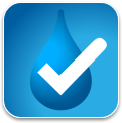As Australia prepares to enforce further restrictions on the use of leaded plumbing products within our drinking water systems in 2026, it is important to know the law and prepare for any potential pitfalls.

Australia is among the world’s best in terms of water quality, yet there is still an invisible killer leaching into our drinking water, which is preventable and must be stopped.
That is the long-standing opinion of Master Plumbers locally, and the International Association of Plumbing and Mechanical Officials (IAPMO) globally.
Now, the Australian Building Codes Board (ABCB) has issued an advisory notice about the new National Construction Code limitation on the allowable content of lead in plumbing products used in our drinking water systems. From May 1, 2026, the allowable lead in plumbing products, which contain copper alloys and are intended for use in contact with drinking water, must have a weighted-average lead content of no more than 0.25%.
At this time only products WaterMark certified as conforming to the lead-free provisions will be authorised for use in plumbing installations.
Graham Clark, General Manager of the International Association of Plumbing & Mechanical Officials (IAPMO), sums up the rationale behind the tighter rules.
“Lead cannot be consumed at any level and be safe; with exposure known to cause neurological and cognitive health issues,” Graham says. “So, we must all play our part in reducing the amount of lead in the plumbing products we manufacture, sell, install and, most importantly, use in our drinking water systems.”
A tasteless and odourless contaminant, lead is present in drinking water worldwide. Exposure to lead in childhood or during pregnancy can cause lifelong harm, yet globally about one in three children have elevated levels of lead in their blood.
From the 1970s Australian states and territories started to ban lead in many products, including petrol, paint, roof flashings and lead pipe. Other interventions for drinking water have included water treatment, water testing standards and a maximum 4.5% lead-content restriction for some plumbing products.
These have contributed to Australia sitting in the top 15% for water quality in the world. However, where lead is present in drinking water in quantities above that permitted by AS/NZS 4020, Testing of products for use in contact with drinking water (10 μg/L), the probable cause is plumbing products that are used in water supply delivery system within the property.
Unfortunately, lead is found at above the allowable rate far too often and researchers at Macquarie University have found that the most effective means in further reducing lead content in drinking water are interventions targeted at its source, through the use of low-lead plumbing products and materials.
“This is the tail end of restrictions and will ensure public health and safety,” Master Plumbers Senior Technical Advisor Gary Bath says.
Lead is a common additive to the manufacture of brass tapware and fittings as it increases the machinability of the brass. Brass is a common product in a drinking water supply system most commonly in the form of tap bodies, final connection points and threads.
Master Plumbers are particularly concerned about an increase in lead in products coming into our market. Gary says, in some cases manufacturers are adding more lead as they recycle brass products.
“So, we are potentially getting more lead than ever coming back into our systems,” he says.
“Master Plumbers strongly supports these latest restrictions as a means to ensure consumers continue to have access to the safest drinking water in the world and we have been part of these discussions for the past five years.”
IAPMO’s Graham Clark adds it is important that the continued reduction of the use of lead in drinking water supply system componentry is adhered to nationally and he is hopeful these limitations become the norm internationally.
“Consistency across jurisdictions is critical for all parties within the supply chain. To have different sets of rules across Australian state and territory borders would unnecessarily hinder travelling practitioners, regulators and manufacturers of plumbing products,” Graham says.
“The changes to the Plumbing Code of Australia and the WaterMark Certification Scheme bring Australia somewhat in line with the US and Europe, so we are on the path to harmonisation.
What is the impact on plumbers?
Current WaterMark Certification requirements are policed at the point of installation. Graham explains:
“This means that even if the plumber who installs the product in the system did not purchase the product, they are responsible for ensuring it meets any WaterMark conditions required.”
“We recognise that this is another responsibility being put at the feet of plumbers,” Gary Bath says.
“Plumbers are expected to say no to the consumer if it does not carry the Lead-Free WaterMark trademark,” he explains. “If it does not comply with the Lead-Free WaterMark after 1 May 2026, it is illegal to install and that will be on the plumber not the customer.”
While this is no different from the current WaterMark Scheme, Gary says, Master Plumbers is not standing idle.
“We will continue to lobby for a highly visible, Lead-Free WaterMark label and POS (point-of-sale) marketing so that consumers can be made aware.
“We are about empowering our members so that they can pass the information onto their customers.
This is the best way to create value as the conversation with consumers is one-to-one and therefore the most impactful way.
“The supply of training and information, and the retooling of plumbers, all comes at a cost to the industry.”
And for consumers? The new Lead-Free WaterMark certification extends to only those products that are to be installed into a drinking water system. So, in effect, non-WaterMark Certified products can continue to be made available for irrigation or other systems and be available for the public to purchase, in many cases sitting alongside Certified products in a retail situation at a lesser cost.
“The public cannot look to the cheapest item,” Gary says. “For their own safety they need to look for the WaterMark Certification symbol on all plumbing products, such as taps, that their drinking water touches. I strongly advise against buying cheap products online or in stores that do not comply with WaterMark, not only is illegal to install them for drinking water, but they may also have an even higher lead content than is currently allowed.”
Key facts
A three-year transition period to support Australia’s path to reducing allowable lead levels in many plumbing products commenced on 1 May 2023.
The Lead-Free WaterMark trademark has been registered and will be required on all products used in the drinking water systems from 1 May 2026.
Clause A5G4 of NCC 2022 Volume Three (Plumbing Code of Australia) specifies that copper alloy plumbing products in contact with drinking water must limit the allowable lead content to a weighted average lead content of not more than 0.25%.
Manufacturers and suppliers of impacted products should contact their WaterMark Conformity Assessment Body, such as IAPMO, to arrange certification to these requirements.
Share this Article






